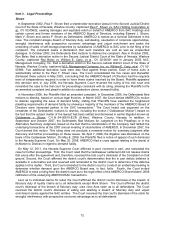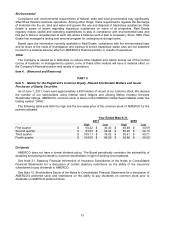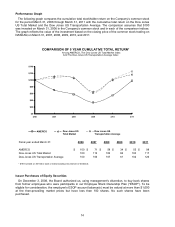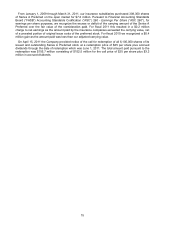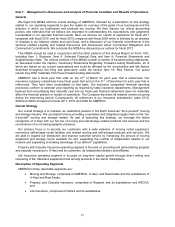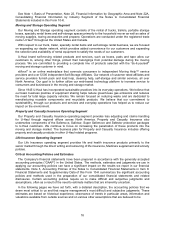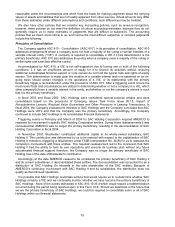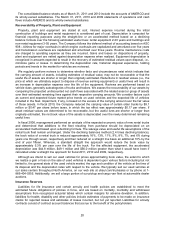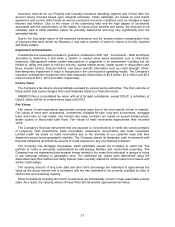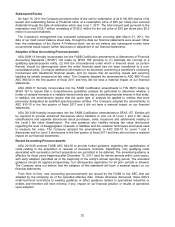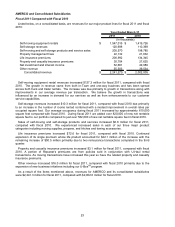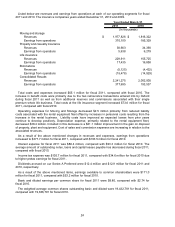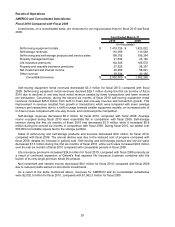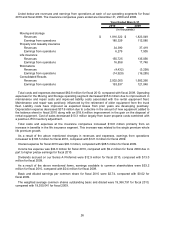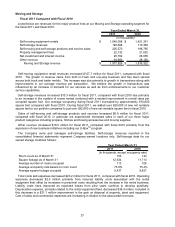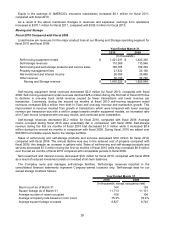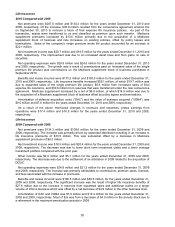U-Haul 2011 Annual Report Download - page 26
Download and view the complete annual report
Please find page 26 of the 2011 U-Haul annual report below. You can navigate through the pages in the report by either clicking on the pages listed below, or by using the keyword search tool below to find specific information within the annual report. 21
Insurance reserves for our Property and Casualty Insurance operating segment and U-Haul take into
account losses incurred based upon actuarial estimates. These estimates are based on past claims
experience and current claim trends as well as social and economic conditions such as changes in legal
theories and inflation. Due to the nature of the underlying risks and the high degree of uncertainty
associated with the determination of the liability for future policy benefits and claims, the amounts to be
ultimately paid to settle liabilities cannot be precisely determined and may vary significantly from the
estimated liability.
Due to the long tailed nature of the assumed reinsurance and the excess workers compensation lines
of insurance that were written by Repwest, it may take a number of years for claims to be fully reported
and finally settled.
Impairment of Investments
Investments are evaluated pursuant to guidance contained in ASC 320 - Investments - Debt and Equity
Securities to determine if and when a decline in market value below amortized cost is other-than-
temporary. Management makes certain assumptions or judgments in its assessment including but not
limited to: ability and intent to hold the security, quoted market prices, dealer quotes or discounted cash
flows, industry factors, financial factors, and issuer specific information such as credit strength. Other-
than-temporary impairment in value is recognized in the current period operating results. The Company’s
insurance subsidiaries recognized other-than-temporary impairments of $0.8 million, $2.2 million and $0.4
million for fiscal 2011, 2010 and 2009, respectively.
Income Taxes
The Company’s tax returns are periodically reviewed by various taxing authorities. The final outcome of
these audits may cause changes that could materially impact our financial results.
AMERCO files a consolidated tax return with all of its legal subsidiaries, except DGLIC, a subsidiary of
Oxford, which will file on a stand alone basis until 2012.
Fair Values
Fair values of cash equivalents approximate carrying value due to the short period of time to maturity.
Fair values of short term investments, investments available-for-sale, long term investments, mortgage
loans and notes on real estate, and interest rate swap contracts are based on quoted market prices,
dealer quotes or discounted cash flows. Fair values of trade receivables approximate their recorded
value.
The Company’s financial instruments that are exposed to concentrations of credit risk consist primarily
of temporary cash investments, trade receivables, reinsurance recoverables and notes receivable.
Limited credit risk exists on trade receivables due to the diversity of our customer base and their
dispersion across broad geographic markets. The Company places its temporary cash investments with
financial institutions and limits the amount of credit exposure to any one financial institution.
The Company has mortgage receivables, which potentially expose the Company to credit risk. The
portfolio of notes is principally collateralized by self-storage facilities and commercial properties. The
Company has not experienced any material losses related to the notes from individual or groups of notes
in any particular industry or geographic area. The estimated fair values were determined using the
discounted cash flow method and using interest rates currently offered for similar loans to borrowers with
similar credit ratings.
The carrying amount of long term debt and short term borrowings are estimated to approximate fair
value as the actual interest rate is consistent with the rate estimated to be currently available for debt of
similar term and remaining maturity.
Other investments including short term investments are substantially current or bear reasonable interest
rates. As a result, the carrying values of these financial instruments approximate fair value.



